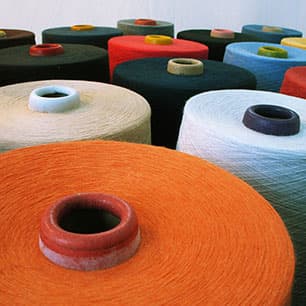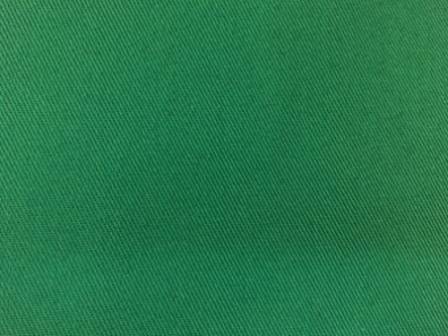Fabrics
Once upon a time, fabric came in fairly limited choices: Wool, cotton, linen, and silk.
Not anymore.
Today, thanks to synthetics and synthetic fabrics, it seems like there are more fabric choices than shades in the colour wheel. With so much choice, how do you decide which fabric to go with?
At PacCana, we offer a huge selection of fabrics and sewing supplies not only to Calgary and the surrounding area, but also for manufacturers and other businesses, tailors, dry cleaners, and home sewers all across Canada and the USA. We also have a knowledgeable staff to help you choose the right fabric and sewing accessories for your projects. What follows is a comparatively brief outline of some of the most popular fabrics available today, their best uses, and some essential terms to know when deciding upon which fabric to use for your specific project.
If you have any questions about what you read here or if there’s anything this page doesn’t answer for you, please don’t hesitate to contact us. Or visit our home page. We’re always happy to help.
Nylon Fabrics
A fully synthetic fabric, nylon was first used for toothbrush bristles starting in the 1940s but is perhaps most famous for its uses in women’s pantyhose (which is why they’re often called “nylons”). A thermoplastic, nylon is heat sensitive and will melt when exposed to extreme heat unless treated with a retardant.
Nylon’s luster, smooth feel, lightweight, and strength make it a popular fabric choice. It’s easy to care for and easily dyed, with applications ranging from lingerie to camping gear. In fact, during WWII nylon was the fabric of choice for parachutes, ropes, tents, and tires – because of this, ladies wanting a nice pair of affordable tights had to wait until after the war had ended since virtually all the nylon fibers produced went directly to the war effort!
Click here to see our collection of nylon fabrics and products.
Polyester Fabric
Another synthetic fabric, polyester was actually developed before nylon. Though not as popular as it once was, it’s still a top choice for blended fabric garments and other consumer products thanks to its strength, durability, and hydrophobic nature. While many still think of ‘70s pantsuits when they hear this word, this versatile material is also used for many different consumer products
Polyester retains its shape, is mold and mildew resistant, and is easily washed & dried, making it the go-to choice for all types of outerwear – especially in harsher climates. From fabric to batting to zippers, polyester is among the most adaptable synthetics out there.
Click here to see our collection of polyester fabrics.
Gabardine Fabrics
Originally invented in the late 19th century by the same guy who founded Burberry fashions, gabardine is a rough, tough, and closely woven fabric that is traditionally made of fine wool yarn, or “worsted wool”. Today, however, gabardine is also made from cotton, polyester, or even a blend of fibers.
Gabardine was the fabric of choice for many intrepid adventurers of the past 150 years, including explorers of both the Arctic and Antarctic and even George Mallory when he attempted to scale Mt. Everest in 1924. Gabardine’s tight weave worked well to trap heat while repelling moisture, making it the logical choice for these extreme environments.
Common uses for this type of fabric today include military uniforms, dress pants, overcoats and jackets, and tailored garments.
Click here to see our collection of gabardine fabrics.
Cordura Fabrics
A fabric brand that is internationally recognized for its toughness and stamina, and is the fabric of choice for many of the garment industry’s producers of high-performance gear due to its strong reputation. It is highly resistant to abrasion, tearing, scuffing, and harsh climates. Cordura is among the most widely used fabrics by law enforcement agencies across the globe.
Click here to see the various Cordura products we offer.
Fleece Fabrics
While the term “fleece” is generically used to refer to a deeply-piled fabric, in the context we use it here we’re referring more specifically to polar fleeces. Polar fleece is made from a synthetic fiber, most often polyethylene terephthalate. This fabric is best known for its ability to retain heat as wool does but at a fraction of even the lightest wool’s weight.
Fleece is also hydrophobic, remarkably soft, and incredibly easy to care for, making it a fantastic choice for a wide variety of garments.
Click here to see our collection of fleece products.
Useful Terms
So your supplier suggests a Cordura 300 denier fabric with fusible interfacing for those gym bags you want to be made... Or perhaps you’re following a jacket pattern that calls for a twilled gabardine with a polyester satin lining.
In the world of fabrics, knowing what these terms mean can spell the difference between staying warm and dry or getting frozen and thoroughly soaked.
Denier: Pronounced /den-YAY/, this is the term used to describe the measurement of a yarn’s thickness and thus the weight per unit length. As one might guess, a higher number means a thicker thread, coarser material, and heavier density.
If you’re looking for a good fabric for gym bags, backpacks, and durable totes then a 200-500 dernier water-resistant fabric would do the trick.
Click here the see the various fabric deniers we offer.
Interfacing
This term is used to describe a type of fabric or textile that goes on the inside (or unseen side) of a fabric. Primarily used to add rigidity, shape, and strength to textiles, interfacing can come in fusible and non-fusible variants.
- Fusible interfacing is interfacing that uses heat and pressure (i.e. ironing) to adhere – or “fuse” – to a fabric.
- Non-fusible interfacing is interfacing that does not use heat and pressure to adhere to the fabric and must instead be sewn on.
Click here to see our collection of interfacing.
Batting
A term that refers to a type of insulation commonly used in quilting and the snow for the mall Santa’s village, batting is often made from cotton, polyester, and wool. It can also be made of silk or bamboo, but these latter types of batting are usually rarer and therefore more expensive.
Light in weight and of varying thickness, batting can be handmade or machine crafted and most often come in thicknesses of between ¼” – 1¼”.
Click here to see our collection of battings.
Twill Fabric
The word “twill” refers to a specific weave pattern distinguishable by its distinct diagonally parallel-lined weave. The weave itself varies in terms of complexity and the fabrics used and is the weaving pattern used in chino, houndstooth, and herringbone fabrics.
Click here to see our collection of twilled products.
PVC Fabric
PVC Fabric is glossy or shiny fabric backed with polyester. It is used in almost every industry including furniture, awnings, shoes, clothing, sports equipment, camping supplies, backpacks, awnings, truck tarps, truck covers and sidewalls, inflatables, commercial sewing projects, and patio enclosures, among many other uses.
Click here to see our collection of PVC Fabrics
At PacCana Enterprises, we pride ourselves on offering a great selection of different sewing fabrics and accessories for commercial sewing and manufacturing needs.
Browse our inventory to see how we can help you with all your sewing supply needs, and please contact us with any questions or requests you have.












